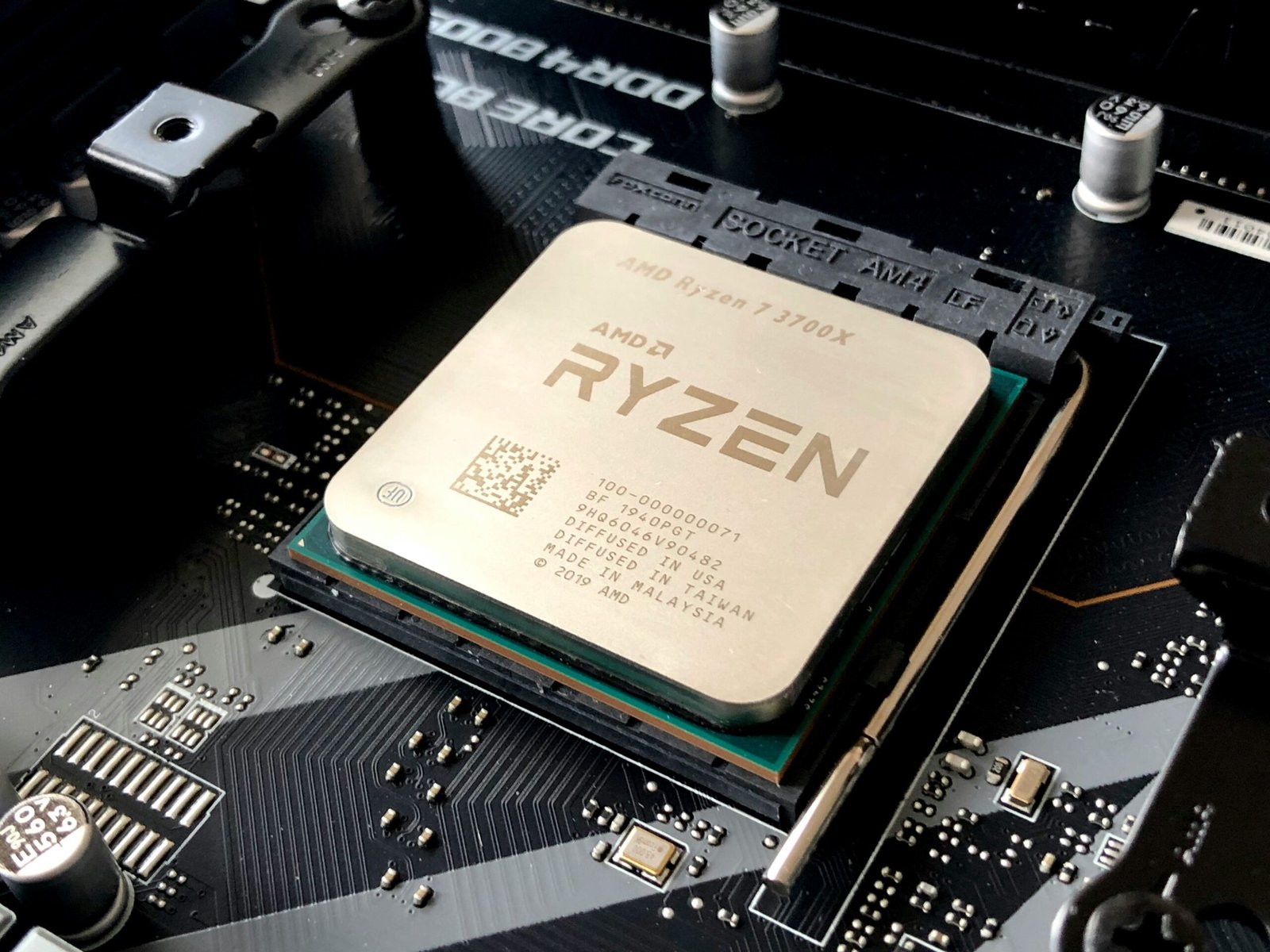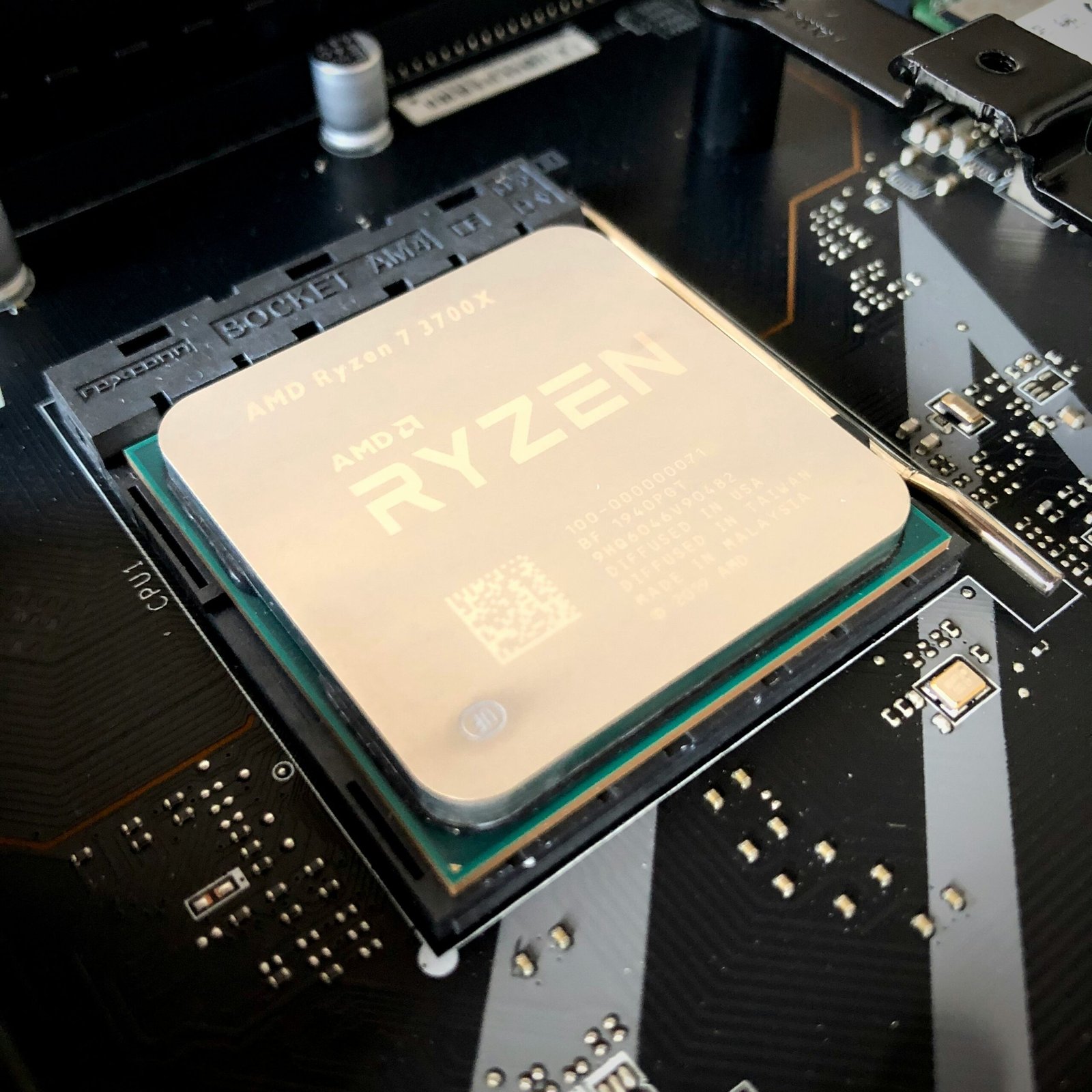Introduction to Intel’s CPU Generations
Intel, a leader in semiconductor technology, has consistently evolved its microprocessor offerings to meet the advancing demands of computing. The progression of Intel’s CPU generations reflects significant improvements in performance, efficiency, and overall architecture. Each generation typically brings refinements in processing power, energy consumption, and integrated technologies, making them essential components of modern computing devices.
The importance of these generational upgrades cannot be overstated. CPU generations demonstrate Intel’s commitment to innovation as they are engineered to leverage new manufacturing processes and design philosophies. For instance, through advances in lithography and circuit design, newer generations often feature smaller transistors, resulting in better performance per watt and enhanced computational capabilities. This miniaturization has led to increased transistor density, allowing for more complex processing tasks to be executed efficiently.
In addition to physical improvements, Intel’s CPU generations frequently introduce new instruction sets, which enable software developers to optimize programs for greater efficiency. Features such as integrated graphics, improved support for artificial intelligence, and enhanced security protocols often accompany these upgrades. This trend showcases Intel’s response to the emerging demands of both consumers and professional users, who require powerful yet efficient processing solutions.
As we delve into the specific advancements of Intel’s 13th and 14th generation CPUs, it is essential to recognize the broader context of these generational shifts. Understanding the foundational improvements made in earlier iterations allows us to appreciate the innovative features that set the more recent generations apart in the ever-evolving landscape of computing technology.
Overview of Intel’s 13th Gen CPUs: Raptor Lake
Intel’s 13th Generation CPUs, codenamed Raptor Lake, were introduced as a continuation of the Alder Lake architecture and marked significant improvements in performance and efficiency. Raptor Lake features a hybrid architecture that combines performance cores (P-cores) and efficiency cores (E-cores) to optimize workload distribution. This innovative design allows Raptor Lake CPUs to excel in both single-threaded and multi-threaded applications, catering to a broad spectrum of users, from gamers to content creators.
- 13th Gen Intel Core processors offer revolutionary design for beyond real-world performance. From extreme multitasking, …
- 16 cores (8 P-cores + 8 E-cores) and 24 threads
- Up to 5.4 GHz unlocked. 30M Cache
In terms of performance specifications, Raptor Lake processors were equipped with enhanced clock speeds compared to their predecessors, and they showcased improvements in cache sizes, which play a crucial role in accelerating data processing. The architecture supports DDR5 memory, offering faster data transfer rates, alongside compatibility with DDR4, thereby providing flexibility for users looking to upgrade without entirely overhauling their existing systems. These advancements positioned Raptor Lake as a compelling choice among CPU offerings available on the market.
The reception of the 13th Gen Raptor Lake CPUs was generally positive, with many reviewers highlighting their capability to deliver superior performance across diverse computing scenarios. The competitive landscape saw Raptor Lake effectively challenge rival offerings from AMD, as Intel’s advancements appealed to gamers seeking high frame rates and productivity enthusiasts looking for efficiency. Additionally, Raptor Lake’s energy efficiency improvements contributed to longer battery life in laptops, reinforcing Intel’s commitment to innovation.
In summary, Intel’s Raptor Lake 13th Gen CPUs exemplify significant strides in processing technology, with their hybrid architecture and enhanced specifications catering to the evolving needs of consumers and professionals alike. The blend of performance and flexibility solidified Raptor Lake’s place in the market, influencing both consumer choices and competitor strategies.
The Challenges Faced by Intel in the 13th Gen Launch
The launch of Intel’s 13th generation CPUs marked a pivotal moment for the company, yet it was not without significant challenges that impacted its overall success. Among these challenges, manufacturing issues emerged as a primary concern. As the demand for high-performance processors surged, Intel struggled to ramp up production to meet consumer expectations. This struggle was exacerbated by the reliance on cutting-edge technology, which at times led to delays in the manufacturing process. A substantial number of units had to be shelved due to quality assurance measures, which further contributed to the limited availability of the CPUs in the market.
In addition to manufacturing hurdles, Intel faced considerable supply chain disruptions triggered by global events, notably the aftermath of the COVID-19 pandemic. These disruptions affected not only the components needed for the production of the 13th gen CPUs but also led to delays in shipping and distribution. The semiconductor shortage, which has been a persistent issue in recent years, intensified during this period, leading to heightened competition among manufacturers for limited resources. Consequently, these factors diminished Intel’s ability to keep up with the soaring demands of the consumer market.
Furthermore, the competitive landscape posed a formidable challenge for Intel during the 13th generation launch. Rival brands such as AMD offered compelling alternatives, often at competitive price points, that swayed consumers away from Intel’s offerings. The fierce competition prompted many potential customers to weigh their options more carefully, which inevitably impacted Intel’s market share. This environment not only influenced product availability but also shifted consumer sentiment, leading to mutual criticisms and discussions surrounding Intel’s commitment to innovation and performance.
Transition to the 14th Gen CPUs: Meteor Lake
The transition from Intel’s 13th generation CPUs, known as Raptor Lake, to the 14th generation, Meteor Lake, marks a significant evolution in the company’s processor technology. Meteor Lake represents Intel’s commitment to addressing the challenges faced in prior generations while enhancing performance, efficiency, and versatility for a wide range of computing applications. This new generation showcases several innovative features designed to improve overall user experience and satisfaction.
One of the most notable advancements in Meteor Lake is the use of a chiplet architecture, which allows for greater scalability and flexibility. This architectural change enables Intel to integrate various process nodes within a single package, optimizing both performance and power consumption. By implementing this new design, Intel aims to deliver more efficient CPUs that can handle simultaneous tasks and demanding applications without compromising thermal management.
- Game without compromise. Play harder and work smarter with Intel Core 14th Gen processors
- 24 cores (8 P-cores + 16 E-cores) and 32 threads. Integrated Intel UHD Graphics 770 included
- Up to 5.9 GHz with Turbo Boost Max Technology 3.0 gives you smooth game play, high frame rates, and rapid responsiveness
In terms of performance improvements over its predecessor, Meteor Lake introduces enhancements in both multicore and single-core capabilities. This includes an increase in the number of cores and threads, providing users with a more robust computing experience. Furthermore, Intel has incorporated advanced AI features within the architecture, which helps accelerate tasks such as image recognition and natural language processing, making these CPUs more suitable for machine learning applications.
The graphics capabilities also receive a significant upgrade with Meteor Lake, boasting an improved integrated GPU that enhances visual performance and supports advanced gaming technologies. This development reflects Intel’s commitment to providing not only powerful CPUs but also complete solutions that cater to the growing demands of users in both consumer and professional markets.
In conclusion, Intel’s introduction of Meteor Lake signifies a strategic shift aimed at overcoming past hurdles while propelling the company forward in the competitive landscape of processors. With its balanced approach to performance, efficiency, and innovation, the 14th generation CPUs are poised to redefine expectations and reshape the future of computing technology.
Key Features of Intel’s 14th Gen CPUs
The 14th Generation Intel CPUs mark a significant step forward in both architecture and technology, showcasing a number of standout features aimed at enhancing user experience across various applications. One of the primary advancements is the improved efficiency achieved through the introduction of a new hybrid architecture, which effectively combines performance cores and efficiency cores. This design not only boosts power efficiency but also optimizes multitasking capabilities, allowing for a seamless user experience even during demanding workloads.
Additionally, the 14th Gen CPUs have integrated built-in artificial intelligence (AI) capabilities. This allows for smarter resource management and dynamic load balancing, significantly improving overall performance. With AI-driven enhancements, users can experience accelerated processing speeds and smarter gaming graphics, making it suitable for gamers and content creators alike. Furthermore, the CPUs come equipped with advanced thermal management systems, enhancing performance without compromising heat control, which is crucial for maintaining longevity and system stability.
Intel has also refined its manufacturing processes for the 14th Generation, transitioning to smaller node technology, which allows for better transistor density. This not only results in improved performance but also supports higher clock speeds while maintaining lower power consumption. When comparing these advancements to leading competitors in the market, such as AMD, Intel’s 14th Gen CPUs hold a competitive edge regarding performance-per-watt and integrated AI capabilities, making them a strong contender in the high-performance CPU landscape.
Overall, the 14th Generation Intel CPUs deliver more than just incremental upgrades. They embody a comprehensive evolution in design and technology, ensuring that users benefit from improved performance and efficiency tailored to modern computing demands.
Market Reception and Performance Analysis of 14th Gen CPUs
The 14th generation Intel CPUs, branded under the Meteor Lake series, have generated significant interest within the technology sector since their release. The initial market reception has been predominantly positive, with consumers and technology enthusiasts eager to adopt the latest advancements in computing power. Tech experts have conducted extensive performance benchmarks comparing Meteor Lake to its predecessor, the 13th generation Raptor Lake CPUs. These analyses reveal substantial enhancements in both single-threaded and multi-threaded performance, demonstrating Intel’s continued commitment to innovation.
In various real-world usage scenarios, Meteor Lake has exhibited impressive capabilities across diverse applications, from gaming to productivity-focused tasks. Benchmark tests have shown noticeable gains in frame rates in popular video games when using 14th gen processors compared to previous generations. Additionally, tasks such as video editing and 3D rendering have seen improvements, driven by enhanced core architecture and optimized energy efficiency. These upgrades have made the CPUs particularly appealing for professionals in creative sectors.
Intel has also made strides in thermal management, contributing to more stable performance under high workloads. Users have reported lower temperatures and reduced power consumption, leading to longer-lasting performance without thermal throttling. Reviews from tech experts highlight that Meteor Lake not only showcases superior raw performance but also excels in efficiency, thereby setting a new standard in the CPU market.
While the 14th generation CPUs have been well-received, critiques exist, particularly regarding pricing and competition. Some reviewers argue that, while performance has certainly improved, the cost-to-performance ratio compared to rival offerings from AMD remains a point of contention. Overall, the Intel 14th generation CPUs are positioning themselves as strong contenders, boasting significant advancements that may reshape market dynamics.
Intel’s Strategic Direction for the Future
The evolution of Intel’s 13th and 14th generation CPUs marks a pivotal moment in the company’s strategic direction moving forward. Recognizing the competitive pressures in the semiconductor industry, Intel aims to innovate not only in chip architecture but also in manufacturing processes. One notable initiative is the acceleration of their research and development efforts, with a focus on advanced process technologies such as EUV (Extreme Ultraviolet Lithography), which are critical for producing smaller, more efficient chips. This technological enhancement underpins Intel’s ambition to reclaim its leading position in the market.
Moreover, Intel has forged key partnerships with various technology firms to bolster its research capabilities and enhance product offerings. Collaborations with academic institutions have also been established to drive innovation in artificial intelligence, machine learning, and quantum computing. These partnerships are essential as they expand Intel’s access to cutting-edge technologies and accelerate the development of next-generation computing solutions.
Investment strategies play an equally significant role in Intel’s future roadmap. The company is channeling substantial resources into expanding its manufacturing capacity, including new fabrication plants designed to meet the demand for high-performance computing. Additionally, Intel is taking steps to engage in more sustainable practices and reduce its environmental footprint, aligning with global trends toward energy efficiency and eco-friendly technology.
In summary, Intel’s strategic direction post-13th and 14th generation CPUs is characterized by a commitment to technological advancement, strategic partnerships, and robust investments. These initiatives are designed to position Intel favorably in an increasingly competitive landscape, ensuring the company remains a key player in the tech industry for the foreseeable future.
Comparative Analysis: Intel vs. Competitors
The semiconductor industry has been marked by fierce competition among key players, notably Intel, AMD, and ARM. With the release of Intel’s 13th and 14th generation CPUs, it becomes critical to evaluate their performance against competing architectures from AMD and ARM. Intel’s latest offerings have made significant strides in terms of throughput and multi-threading capabilities, thanks in part to the architectural improvements and increased core counts. However, AMD’s Ryzen series continues to challenge Intel, especially in multi-core performance where AMD often leads. The adoption of 3D V-Cache technology in Ryzen CPUs has further solidified AMD’s position, providing enhanced gaming performance and efficiency, leading to a higher market share in enthusiast and gaming segments.
Power consumption presents another battleground where differences between these competitors become apparent. Intel’s 13th generation CPUs have shown impressive efficiency metrics, but AMD’s efficiency in power management, particularly in the 7000 series, has made it favorable for energy-conscious consumers. ARM, although primarily focused on mobile devices, has been gaining traction within the server and data center markets, where performance per watt is paramount. Their design philosophy allows for high-performance computing tasks while maintaining a lower power footprint, enhancing their appeal in specific sectors, particularly in cloud computing.
Pricing strategies also play a vital role in the competitive landscape. Intel’s CPUs are often priced at a premium, reflecting their brand legacy and performance reputation. Conversely, AMD offers aggressive pricing which attracts budget-conscious consumers, allowing it to capture a considerable share of the mid-range market. As Intel responds to this competition by adjusting its pricing structure, it remains essential for consumers to weigh both performance specifications and cost-effectiveness when selecting a CPU. Overall, while Intel’s 13th and 14th generation CPUs present strong competition, the rapid advancements and strategies employed by AMD and ARM illustrate a dynamic and evolving market in the semiconductor industry.
Conclusion: The Future of Intel CPUs
The evolution of Intel’s 13th and 14th generation CPUs has highlighted both substantial achievements and significant challenges for the company. As the market for computing technology becomes increasingly competitive, these developments provide insight into what lies ahead for Intel. The innovations introduced with these generations show a commitment to enhancing performance, energy efficiency, and integration of advanced technologies such as artificial intelligence and machine learning capabilities.
Intel’s 13th generation, characterized by significant improvements in core architecture and overall efficiency, laid a strong foundation. Its blend of performance and multitasking capabilities has appealed not only to gamers but also to content creators and professionals requiring robust processing power. The subsequent 14th generation, while building on these foundations, signifies Intel’s response to consumer demands for even greater performance alongside energy consciousness, indicating a shift towards sustainability in CPU design and manufacturing practices.
The future trajectory of Intel CPUs also reflects broader trends within the tech market, including the growing importance of collaborative platforms and cloud computing. It remains crucial for Intel to adapt to these changes by harnessing feedback and innovating rapidly. Furthermore, with competitors continuously enhancing their offerings, Intel must leverage its legacy of research and development to preserve its leadership position in the CPU market.
As the landscape of technology continues to evolve, the impact of these advancements will extend beyond Intel itself. The interplay between CPUs and other components, especially with the rising demand for high-performance computing, suggests that the industry may witness further shifts in how these technologies are integrated. Ultimately, the evolution of Intel’s CPUs encapsulates a pivotal moment in technological advancement, setting the stage for future innovations that could redefine computing as we know it.








Leave a Reply